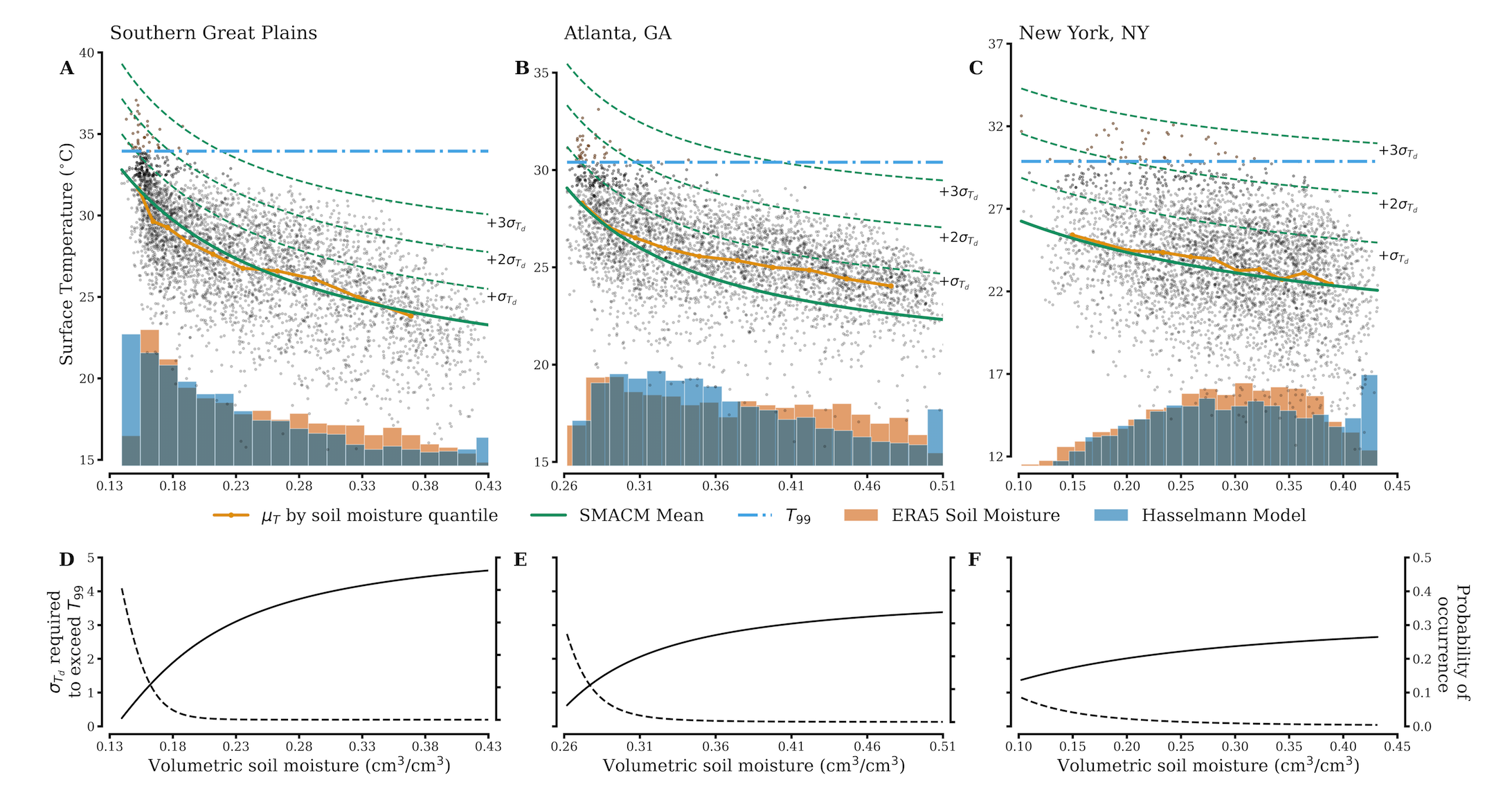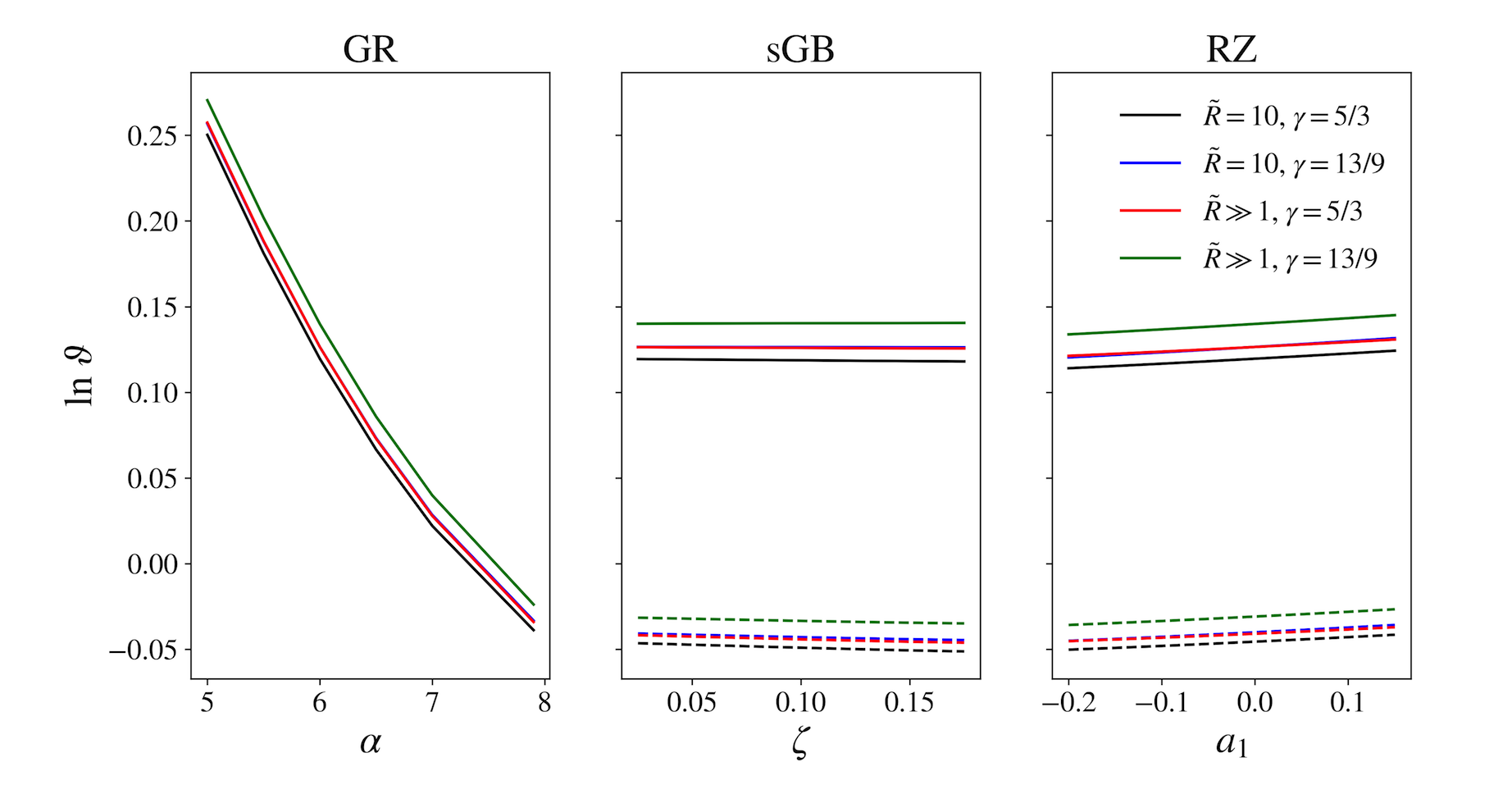An Analytical Model for the Influence of Soil Moisture on Temperature Extremes in the Midlatitudes
R&R at Journal of Climate

Project goal
We leverage observational data and a long reanalysis product to showcase the influence of soil moisture on heat waves. We then formulate a conceptual model for land-atmosphere interactions that disentangles the roles of soil moisture and atmospheric variability in heat wave physics.
Abstract
Heat waves are expected to increase in severity and frequency under climate change. Case studies have shown that heat waves typically occur during a coalescence of anomalous atmospheric and land surface conditions, but teasing apart the different contributing factors is a challenge, in part owing to difficulty in disentangling the role of soil moisture from that of atmospheric variations in solar radiation and thermal advection. Here, we provide evidence that low soil moisture is associated with extremely high temperatures in the midlatitudes and develop a theoretical framework to understand this association. We first show that a nonlinear relationship between soil moisture and temperature arises from energy and mass conservation at the land surface, then employ this relationship to quantify the influence of soil moisture on temperature variability. After deriving a diagnostic equation for the nonlinear temperature response to soil moisture variations, we obtain a dynamical Hasselmann-like model for the soil moisture variations themselves. We find that soil moisture fluctuations control the frequency of temperature extremes by slowly altering the land surface climate state on which atmospheric variability is superimposed, rather than by altering atmospheric variability itself. Our diagnostic model allows us to quantify how extreme an atmospheric anomaly needs to be to create a heat wave, conditional on the underlying soil moisture. By forcing our Hasselmann-like model for soil moisture with stochastic precipitation, we derive analytical solutions for the statistical moments of soil moisture.
Preprint
Our preprint can be found here.
Collaborators
Cristi Proistosescu and Lucas Vargas Zeppetello.
Project code
All source code for this project can be found on my Github.
Presentations
- American Geophysical Union Fall Meeting, December 2022 (Poster)
- University of California San Diego Climate Journal Club, May 2022.
